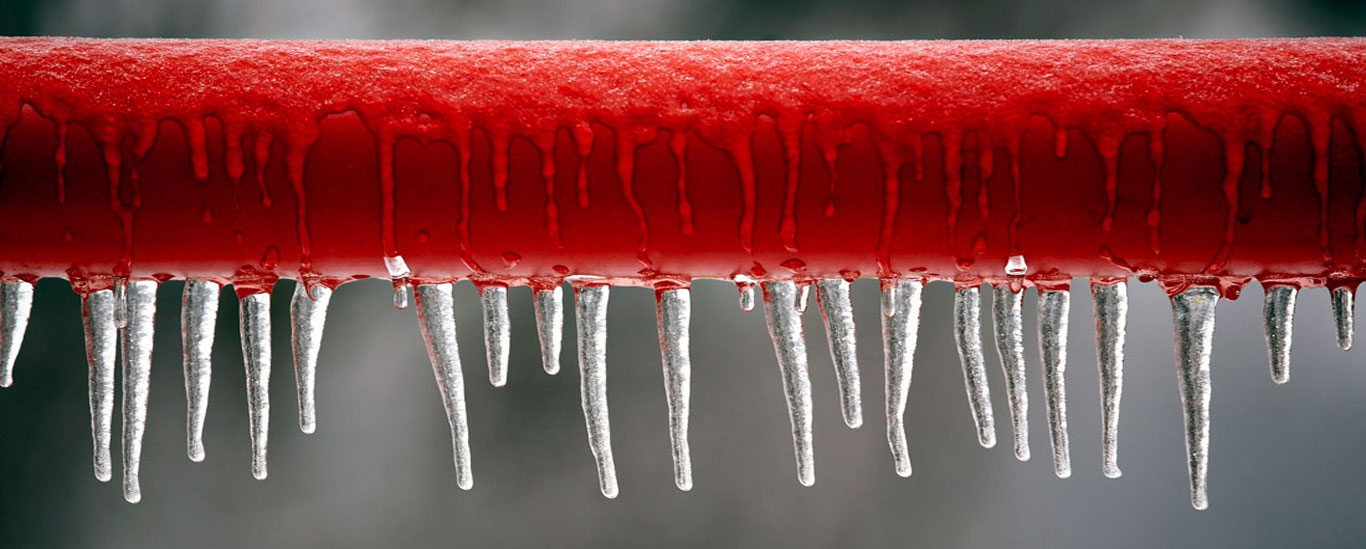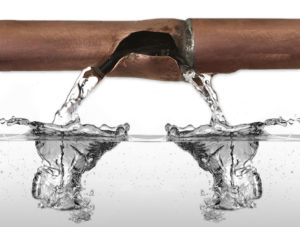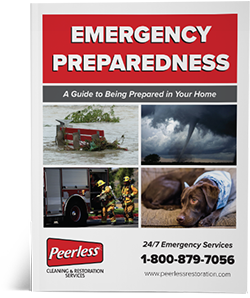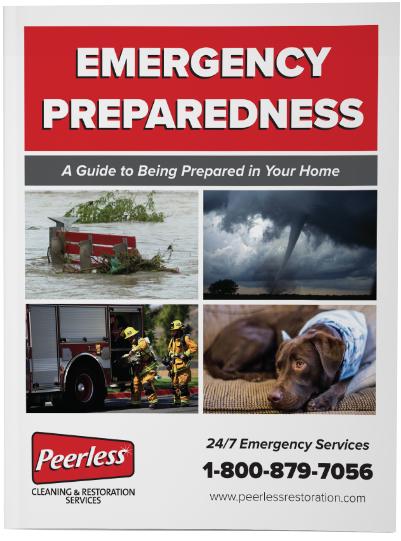Frozen Pipes, What to do…

Frozen Pipes – What to look for and what to do…
Freezing temperatures bring along many possible issues, especially for your home. When the temperature starts dropping below 0 degrees, we often begin to see frozen pipes causing havoc in people’s homes. But what can you do about frozen pipes in your home?
Water is unique because it actually expands as it freezes. As the water freezes and expands, it can place serious pressure on your pipes, whether they’re constructed of metal or plastic. Just a simple 1/8 inch crack in a pipe can release 250 gallons of water a day. This means bad news for your home.
Frozen pipes are often discovered in unheated areas like basements, crawlspaces, garages, and in cabinets under a sink. Pipes that run against exterior walls can also be at high risk of freezing.
Before Your Pipes Freeze
1. Keep your heat above a minimum of 50 degrees during cold spells and make sure your furnace maintains these temperatures. DO NOT raise your temperature to uncomfortable levels. Too high of heat may cause potential mold growth. In serious cold spells, some furnaces, especially older ones, can have a hard time keeping up with the outside temperatures and sometimes quit altogether.
2. Allow your faucets to drip. Opening up the supply line slightly like this takes the pressure off the water in the line.
3. Open up your interior doors. You may notice some rooms of your home may heat differently depending on your system and home. This is often due to the placement of your thermostat and outside air leaks. Opening your doors helps allow an even spread of heat throughout your home, helping it maintain a constant temperature.
4. Open up your cabinets. Water lines for your sinks are often found inside of cabinets. Since there is no air flow inside of these areas, it is hard to keep them heated during drastic cold temperatures. This is especially true for kitchen sinks located against an outside wall.
5. Fill in the gaps. To help battle the outside cold, make sure to seal up any areas where cold air is leaking into your home. Most commonly, these areas are found around exterior doors and windows.
6. Adding Insulation. If you fear certain pipes in your home may be at risk, consider applying some extra insulation, especially if your pipes are located in your attic, basement, or crawlspace.
Before Your Pipes Break
One way to catch if your pipes have frozen before they break is if you go to turn on your faucet and nothing comes out. Most likely you have a frozen pipe that is blocking the water. Most people don’t even notice they have a frozen pipe until it’s too late. When the pipe breaks and the water is still frozen, you may not notice it if this is an area of the home that you don’t commonly use. But, when the temperature rises and that frozen water begins to thaw, that is when the water starts pouring out of the pipe and into your home.
If you’re lucky enough to spot a frozen pipe in your home before it breaks, you might be able to thaw your pipes without it breaking.
1. Open the faucet to relieve the pressure and allow any steam that may be caused by the thawing to exit the line. Also, this allows water to run through the line and will help in the melting of the frozen area.
2. Pick your tool of choice. There are many different ways to heat up your pipes. You can use anything from heating pads to hair dryers/heat guns to even just warm damp towels.
3. Let it run. Once you begin seeing water flow from your faucet, you’ve got your first sign of success. Let the water continue to run, to help thaw the remaining ice in the line.
4. Check for leaks. Once your water pressure is back to normal. Turn off the faucet and inspect the line for leaks.
Unfortunately, you’re not always going to be able to prevent a frozen pipe from breaking in your home. Broken pipes can cause large amounts of damage, not only to your home but all of your possessions as well. The best way to battle a frozen pipe break is to be prepared for when it happens.

A 1/8 inch crack in a pipe can release 250 gallons a day, meaning bad news for your home or business.
After Your Pipes Break
Know where your water shut off is. As soon as you see any kind of water leak from your pipes, immediately shut off your water supply to stop the leaking and minimize the damage. Once you have the water leak stopped, you need to call your insurance agent and a restoration company, like Peerless Cleaning & Restoration Services, immediately.
Peerless will respond quickly to extract the water from your home and begin the drying process with their industrial high tech drying equipment. Special industry equipment like air movers, dehumidifiers, and high heat drying applicators, will affect the time it takes to dry your home and contents. Using improper equipment, or attempting to do-it-yourself, may have lasting effects and could cause secondary damage such as mold.
Another way to minimize the damage is to begin removing contents from the affected area, if possible. If you’re unable to move certain items like furniture, you should place them on styrofoam or wooden blocks above the standing water level. If you don’t have standing water but your carpet is saturated, you can use aluminum foil to separate the water from reaching the contents. You will want to remove and discard contents in the area before the arrival of the restoration company. The longer your possessions are exposed to the water and moisture, the higher the risk of long-lasting damage.
Most pipe breaks are covered by your homeowners’ insurance policy and you should always check with your agent before making a claim. Remember, even though your insurance provider may suggest certain restoration companies, you the homeowner have the ability to choose whomever you trust to take care of your home and get your life back to the way it was.
It is also a good idea to have the phone number to a reliable plumber on hand to get your pipe fixed and back in working order.
Having a loss like a pipe break in your home can be a traumatic experience and you want someone you can trust with your home. Peerless is the only IICRC (Institute of Inspection Cleaning and Restoration Certification) certified firm in the Decatur area. Trusting a certified firm ensures that you are getting the absolute best service from industry professionals. Peerless makes every effort to go above and beyond the homeowners’ expectations. We understand what you’re going through, and our number one priority is helping restore your home back to the way it was before.
(Sources: www.redcross.org, www.thebalancesmb.com, and www.woodard247.com



